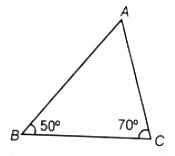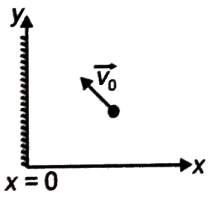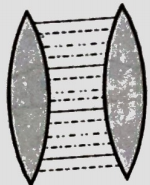If four convex lenses, given to you have focal lengths , then which of the following combination will you prefer to form a compound microscope?
(1) as objective and as eye-lens
(2) as objective and as eye-lens
(3) as objective and as eye-lens
(4) as objective and as eye-lens
A light ray is incident on a prism of refracting angle . The refractive index of prism is , then for what value of angle of incidence, the ray will retrace its path?

1.
2.
3.
4.
The ratio of the velocity of light in a medium to the velocity of light in a vacuum is . If the ray of light is emerging from this medium into the air, then the critical angle for this interface of medium and air will be:
(1) 30
(2) 37
(3) 53
(4) 45
If light ray is incident normally on face AB of a part of a prism, then for no emergent ray from second face AC [refractive index of glass of prism]

(1)
(2)
(3)
(4) can have any value
A plane mirror is fixed in YZ-plane at x = 0. The velocity of a moving object is . The velocity of the image relative to a stationary observer will be:

1.
2.
3.
4.
If there is no emergent light through a prism of refracting angle \(60^{\circ},\) whatever may be the angle of incidence, then the minimum value of the refractive index of the material of the prism is:
| 1. | \(2\) | 2. | \(\sqrt{2}\) |
| 3. | \(1.5\) | 4. | \(\sqrt{3}\) |
If the space between two convex lenses of glass in the combination shown in the figure below is filled with water, then

1. The focal length of the system will decrease
2. The focal length of the system will increase
3. Power of the system will increase
4. Power of the system will become infinite
A prism of refracting angle , has one of the refracting faces polished. A beam of light incident on the other refracting face with i = will retrace its path, if the refractive index of prism would be
1.
2.
3.
4.
1. \(60^{\circ}\)
2. \(45^{\circ}\)
3. \(30^{\circ}\)
4. \(15^{\circ}\)
To form an achromatic combination, two lenses of focal length X and Y and dispersive power A and B respectively, are kept in contact. Which of the following is correct?
1. A = C, B = C/2; X = 2Y
2. A = C, B = C/2; X = -2Y
3. A = C, B = 2C; X = 2Y
4. A = C, B = 2C; X = -2Y






